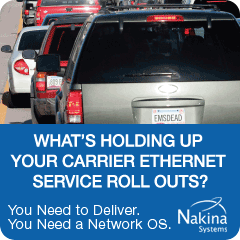
article page
| 1
| 2
| 3
| 4
|
achieved largely through a software upgrade to its electronics. De la Vega also said that his firm has "a clear and logical path" to 700MHz 4G access via the Long Term Evolution (LTE) standard in the 2010 timeframe which should again increase speeds fivefold to nearly 100 megabits per second.
T-Mobile is still concentrating on rolling out its 3G network, and has not released any plans yet for adopting LTE and deploying in the US.
The Future
There are currently 252 HSDPA and 60 HSUPA operators in service in 112 countries. There are another 158 operators who are either planning or are in deployment of their high speed networks. (Source: 3G Americas:Global UMTS HSPA Operator Status Update, 16th January 2009)
There are also some 99 operators across the world that are either planning or deploying WiMax networks, and some 513 companies registered in the WiMax Forum. (Source: WiMax Forum)
At the moment, LTE is leading the charge for the new wireless generation, but until the specifications are completed for 4G, and operators complete their current deployment of “3.5G” services, WiMax is still in the race.
|
|
The majority of operators outside of the USA who have decided to go beyond 3G have chosen to progress with LTE. |
|

Conclusion
4G technology shows enormous promise and will enable consumers to become completely mobile, dispensing with traditional fixed line services. However, there are still a number of outstanding questions that will need to be addressed before this technology can deliver all it’s supposed to:
- Do we need full proposed 4G speeds on the move, or will “3.5G” suffice?
- Is there enough spectrum available for these services to work efficiently and deliver their promised subscriber capacity and quality of service?
- Can there be an agreed set of frequencies and standards across the world to enable seamless roaming of these services?
- Is there enough network infrastructure and capacity to enable the proposed data rates?
If these questions can be answered successfully, then 4G has a bright future delivering data to all consumers, allowing full mobility. If not, then there will always be a case for, and competition from, fixed line and fiber-to-the-home/office. Personally, I hope it lives up to its expectations.
In today’s economic climate the required investment to fully rollout these services is probably not available, and “3.5G” will be with us for some considerable time.
article page
| 1 | 2 | 3 | 4 |
|
|
|
|
|





